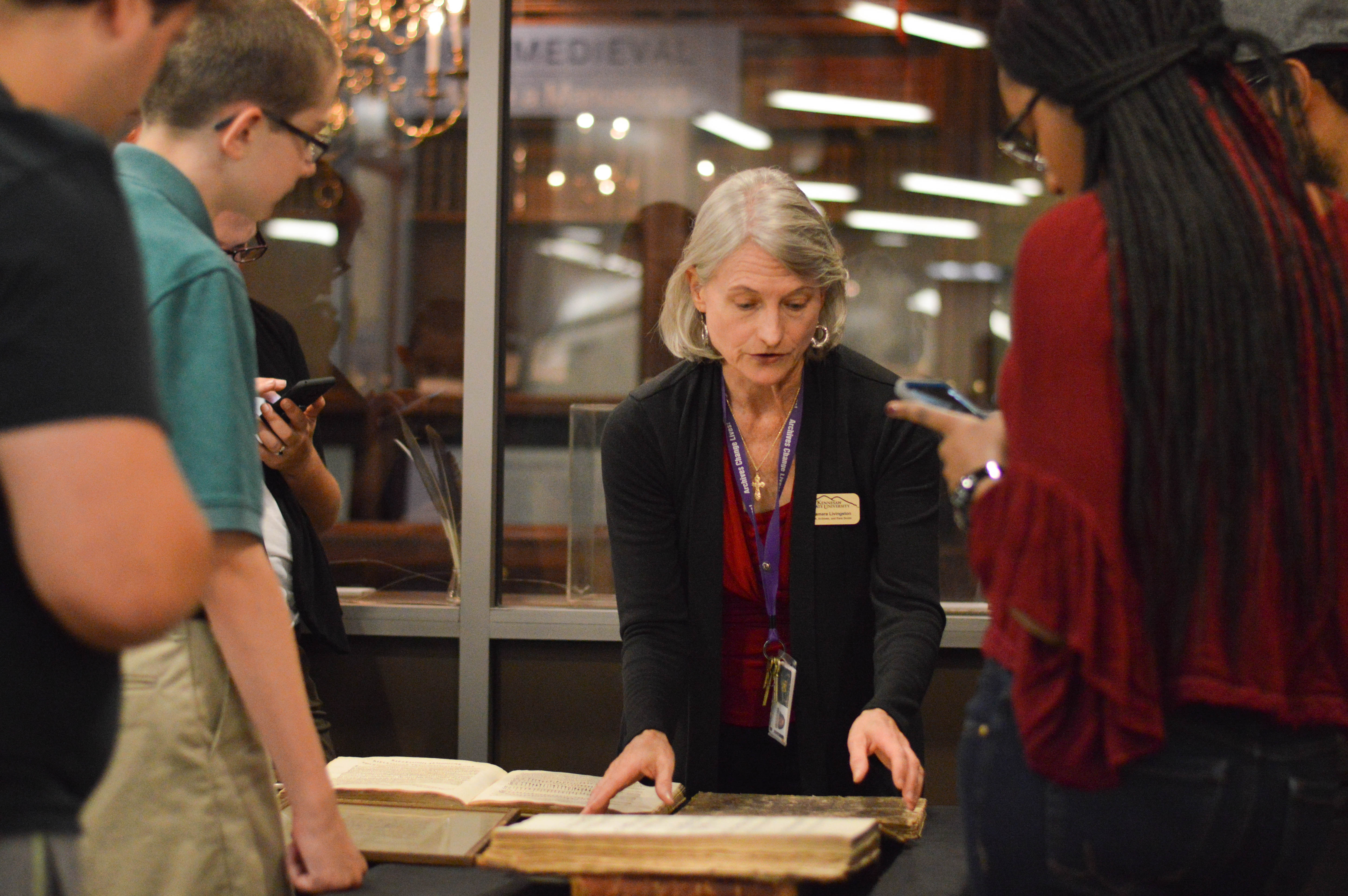Do you have a fascination with rare archives and literary history? The Bentley Rare Book Museum provides Kennesaw State students with the opportunity to view such archives and documents from the museum every Thursday from 10:45 a.m. to 12:15 p.m. on the first floor of Sturgis Library on the Kennesaw Campus.
“It’s a chance for people to get a hands-on experience with our materials and ask questions,” said Dr. Tamara Livingston, director of Rare Books, Archives & Records Management at KSU.
The museum is open to the public every Tuesday through Friday from 10 a.m. to 4 p.m. and the weekly open house will have a new theme every week. On Sept. 13, the open house theme was music and on Sept. 20 the theme will be early scientific texts.
The open house is not the only event the museum offers. The BRBM currently houses the exhibit “Getting Medieval: The Making of a Medieval Manuscript,” which includes a collection of intricate illuminations, a feast calendar and a copy of “Dante’s Inferno” with margin notes from the book’s owner in the sixteenth century.
The museum has several more exhibits than the ones displayed during open houses. The week of September 23, the BRBM will display a collection of banned books to coincide with Banned Books Week.
In spring, the department will collaborate with Phillip Kiernan, an associate professor of Art History at KSU, to display “Discovering Books and Bronzes,” an exhibit that will match ancient bronze sculpture with rare books in the collection.
According to Livingston, age alone is not what makes a book rare.
“Many people think that if a book is a hundred years old, that it’s a rare book,” Livingston said. “Well, it is certainly an old book, but what makes a rare book rare is that it is in limited supply and there’s a high demand.”
This means that modern publications can join the collection, such as fine press books — some of which are currently on display.
Livingston encourages younger generations to keep physical copies of books, photographs and other records despite living in the digital age.
“Not only do [books] provide documentation and evidence of the past, but they also help us make . . . connections with past history — with past people,” Livingston said.


